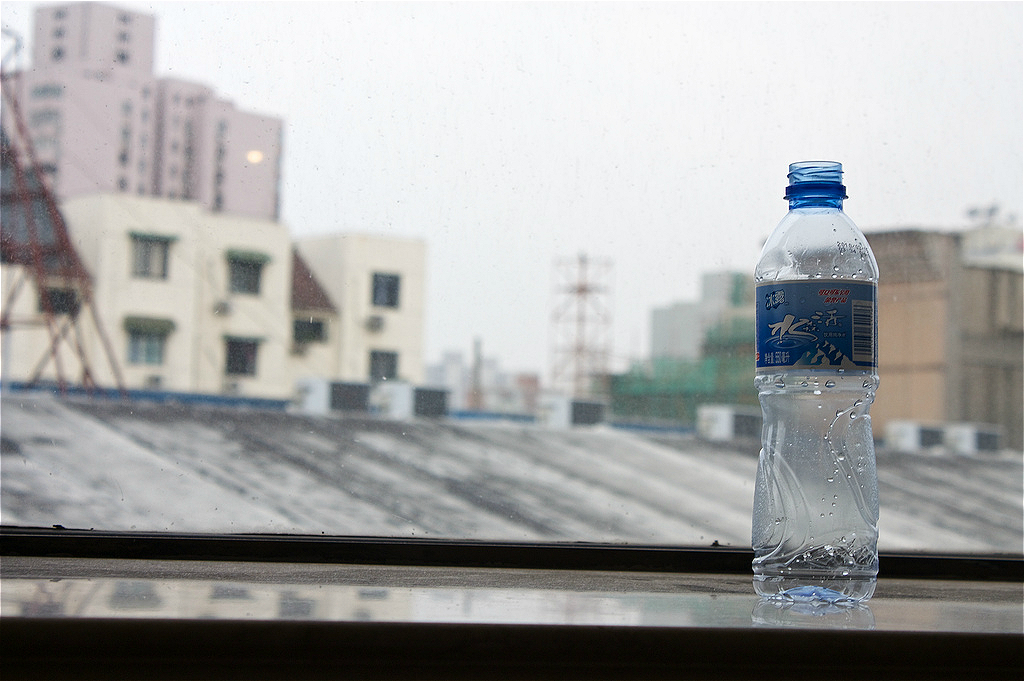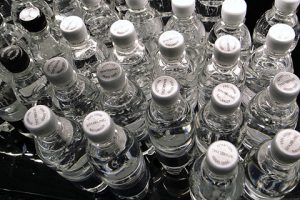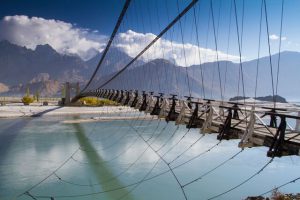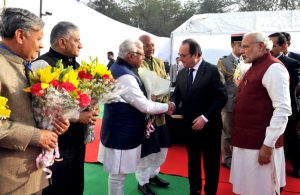In response to concerns over water quality and contamination issues, more Chinese people than ever are drinking bottled water. For many citizens it has become a part of everyday life.
A 2014 survey of 30,000 urban residents in 100 Chinese cities showed that only 59% of people drink (boiled) tap water. The report by the China Water Supply Services Promotion Alliance, an industry association, showed that among non-tap water drinkers the first choice is bottled water (including water ‘carboys’, large plastic vessels used in water coolers), which ranks higher than water from residential purification systems or home filters.
Bottled water is now one of China’s fastest growing sectors in the food and drink industry. Since being introduced in the mid-1990s, bottled water has filled the shelves of convenience stores up and down the country.
While both industry heads and local governments are excited about the economic growth prospects this trend presents, the heavy environmental burden and business risks remain unaddressed.
These risks and are explored in the report, ‘Bottled Water In China: Boom or Bust‘ by China Water Risk, a Hong-Kong based non-profit organisation.
See also: Chinese bottled water: the next water crisis?
No.1 consumer
According to the International Bottled Water Association (IBWA), in 2013 bottled water consumption in China reached 39.5 million cubic metres, representing 15% of the global market, making China the number one market for bottled water in the world.
As shown in the report, bottled water has become one of the fastest growing Fast-Moving Consumer Goods (FMCGs) in China with a compound annual growth rate of 18.1% – more than twice the global average.
However, the true extent of consumption in China is very possibly underestimated by the IBWA. Official data from the Chinese Bureau of Statistics shows the annual production of packaged water in 2012 had already reached 55.6 million cubic metres, almost 20 million cubic metres more than the IBWA estimate.
The Pacific Institute, a non-profit environment research body, concluded in a study that to produce one bottle of water, requires three bottles of water and a quarter bottle of oil. The estimate is in line with the national standards issued by the National Development and Reform Council (NDRC) and Ministry of Industry and Information Technology (MIIT) of China, which have set benchmarks on water intake and energy consumption limits for manufacturing packaged water.
Based on these benchmarks, China Water Risk estimates that to meet the annual bottled water production in China, the industry’s consumption is 20 times that of China’s giant West Lake, one of the most famous artificial lakes in China. In terms of energy use, it would have consumed between 87-158 Terrawatt hours (TWh) of electricity, which is comparable to the electricity generated by the Three Gorges Dam. The plastic used for bottling the water can fill up one Jinmao Tower – the famous 420-metre high skyscraper in Shanghai.
Growth potential
Although China is the world’s number one consumer of bottled water, its per capita bottled consumption rate is still 19% below the world’s average. Some say the gap between international and domestic rates suggests that the Chinese market has lots of unfilled potential.
Current provincial development plans aim to increase production capacity to 50 million cubic metres in Jilin province and 5 million cubic metres in Tibet Autonomous Region (TAG) by 2020. Both plans are rather aggressive if current production volume is considered. The two provincial governments’ plans aim to scale up production capacity by 12 times and 52 times, respectively.
In 2011, China introduced the “Three Red Lines Policy” to control water use, improve water efficiency and curb water pollution. In the State Council’s Water Pollution Prevention and Control Action Plan (also known as the “Water Ten”) released in April 2015, all three red lines are reasserted and reinforced. The new, more stringent water management polices show that China’s future economic development depends on the management of its water resources.
Currently, national Chinese policy is focused on reducing water use in major water consuming sectors such as energy, textiles and agriculture. Billions of yuan of investment is flooding into such sectors to help reach water saving targets. In a tonne-to-tonne comparison, it can take around the same amount of water to extract coal as it does to produce bottled water. Yet, somehow the bottled water industry is mandated to grow.
If China catches up to the per capita bottled water consumption global average by 2020, total water consumption by the industry would grow faster than the “national total water use” red lines. Even if companies take action to improve water efficiency and reduce water consumption, such efforts could easily be in vain because the overall water use by the industry will still continue to rise. The sector is unregulated, putting it in a privileged position compared to other industries, especially in water-challenged provinces.
Boom or bust
Already, the bottled water industry is putting a strain on China’s groundwater, glaciers and upper watersheds. 71% of China’s bottled water production is located in “Dry 11” or “At Risk 9” provinces, where fresh water resources are scarce. China’s parched northern plain produces 20% of China’s bottled water, yet suffers from water scarcity, water pollution, groundwater over-exploitation and ground subsidence. “Dry 11” provinces Shandong and Henan are as thirsty as Middle East countries such as Jordan. And despite heavy reliance on water transfer projects to mitigate their thirst, the two provinces together produced 12% of bottled water in 2012.
As mentioned previously, bottled water is not only water intensive but also energy intensive. China has an energy savings target of 702TWh of electricity by 2020. If China was to improve public water supply and make tap water fit for drinking, the demand for bottled water might fall. Assuming no more bottled water would be produced, 12%-22% of the energy saving target could be achieved.
The plastic issue also needs to be considered. China’s plastic recycling is limited, and exact figures are unknown. Increased bottled water production and consumption means more plastic is heading to landfills, waste incineration stations, or into ecosystems – rivers, oceans, forests and farmlands. All could lead to further environment and health challenges. Very recently, scientists discovered microplastic contamination in table salt produced in China.
China has reached a tipping point. It cannot afford more environmental degradation on the journey towards an ‘Ecological Civilisation’. For policy-makers, an important step is to rethink bottled water policy and to address the mismatches between national and provincial policies.
For brands, information disclosure and improving water efficiency is of course important, but risks have gone beyond Corporate Social Responsibility.
It’s time for brands to rethink their future strategies. One the biggest questions to answer is whether bottled water will continue to be as popular with Chinese consumers if, as the government has promised, drinkable tap water is available to all by 2020.
There are other uncertainties. Will the government ban mineral water extraction in water-scarce regions and vulnerable upper watersheds as its groundwater policy gets more stringent?
And will the high-end glacier water bottling capacities in the “Third Pole” be threatened after COP 21 when all the climate action plans are obligated to fully implemented? There are also doubts as to whether companies can fulfill changing consumer desires for cheap quality products that are also deemed to be ‘green’.
In a country with dwindling water supplies, the future of bottled water could have a big impact.
Hongqiao Liu is the author of “Bottled Water In China: Boom Or Bust?” with China Water Risk.








